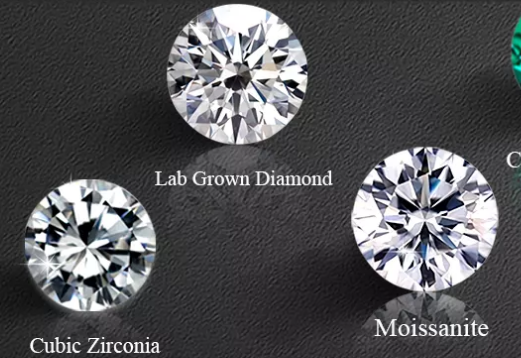Synthetic moissanite has emerged as a stunning and cost-effective alternative to natural diamonds. With its exceptional brilliance, durability, and affordability, synthetic moissanite has gained significant popularity in the jewelry industry. In this article, we will delve into the fascinating world of synthetic moissanite, exploring its origins, properties, and the reasons behind its growing appeal.
The Discovery of Moissanite
Unveiling a Gem from the Stars
In 1893, a French chemist named Henri Moissan made an astounding discovery while examining rock samples from Arizona's Meteor Crater. He identified a new mineral, which was later named moissanite in his honor. Initially, scientists believed that moissanite could only be found in meteorites. However, subsequent research revealed that this extraordinary gem could also be created in a lab.
The Creation Process
Unleashing the Brilliance
Synthetic moissanite is meticulously created using advanced technology and innovative techniques. The process begins with the growth of a moissanite seed crystal, which serves as the foundation. Through a combination of high temperature and pressure, carbon atoms are arranged in a crystal lattice structure, mimicking the natural formation of moissanite. This process, known as chemical vapor deposition (CVD), results in the growth of a large, high-quality synthetic moissanite crystal.

The Properties of Synthetic Moissanite
Unparalleled Brilliance
One of the most captivating features of synthetic moissanite is its exceptional brilliance. With its high refractive index, moissanite possesses a dazzling sparkle that rivals that of a natural diamond. The gem's ability to disperse light into spectral colors creates a mesmerizing play of fire, adding to its allure.
Unmatched Durability
Another remarkable property of synthetic moissanite is its extraordinary durability. Ranking 9.25 on the Mohs scale of hardness, moissanite is extremely resistant to scratching and abrasion. This hardness, coupled with its toughness, makes it an ideal choice for jewelry that can withstand daily wear and tear.
Affordable Luxury
Synthetic moissanite offers a compelling advantage over natural diamonds in terms of affordability. While possessing similar optical properties to diamonds, moissanite is significantly more budget-friendly. This accessibility allows individuals to enjoy the beauty and brilliance of a gemstone without the hefty price tag.
The Growing Popularity of Synthetic Moissanite
Ethical Considerations
One of the primary factors driving the demand for synthetic moissanite is its ethical appeal. Unlike natural diamonds, whose extraction often involves social and environmental concerns, synthetic moissanite is created in a controlled laboratory setting. This ensures a conflict-free origin and reduces the environmental impact associated with mining.
Versatile Design Options
The versatility of synthetic moissanite makes it a favored choice for jewelry designers and enthusiasts alike. Its availability in various shapes, sizes, and colors provides ample creative freedom, allowing individuals to customize their jewelry to suit their personal preferences and styles.
Rising Awareness and Recognition
Over the years, synthetic moissanite has gained substantial recognition as a credible gemstone in its own right. Its unique properties and affordability have captivated the attention of consumers worldwide. Moreover, prominent figures and celebrities donning moissanite jewelry have contributed to its increasing popularity and desirability.
Conclusion
Synthetic moissanite has emerged as a captivating alternative to natural diamonds, offering exceptional brilliance, durability, and affordability. Its origin, properties, and ethical appeal make it an attractive choice for jewelry enthusiasts seeking a stunning gemstone without compromising on quality or budget. As awareness continues to grow and technology advances, synthetic moissanite is poised to shine brighter than ever in the world of jewelry.